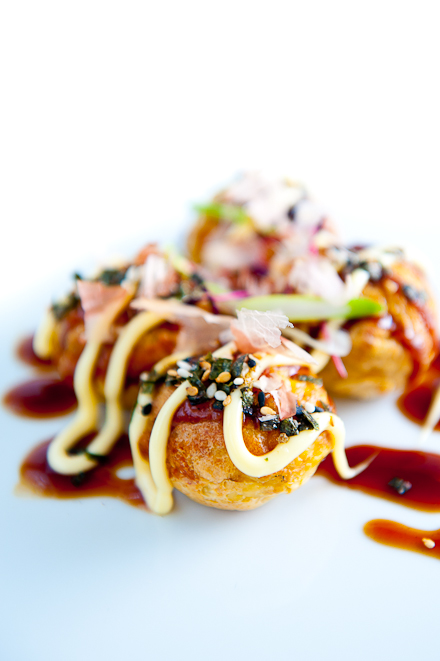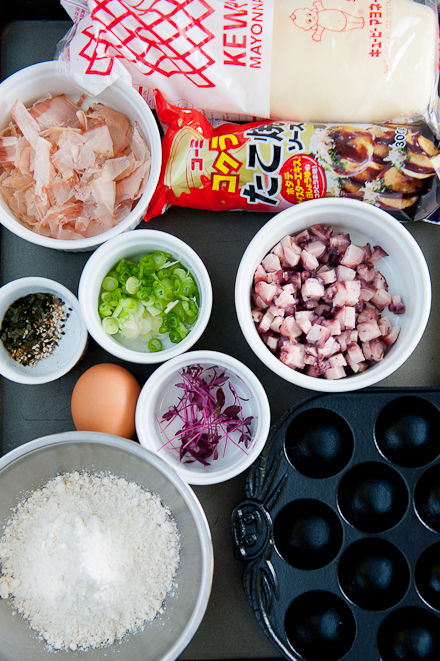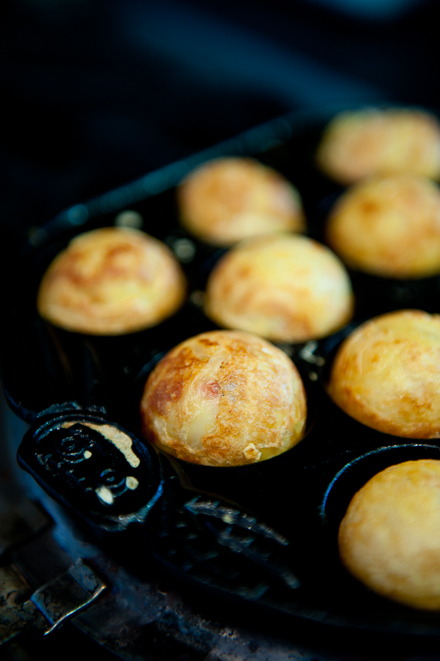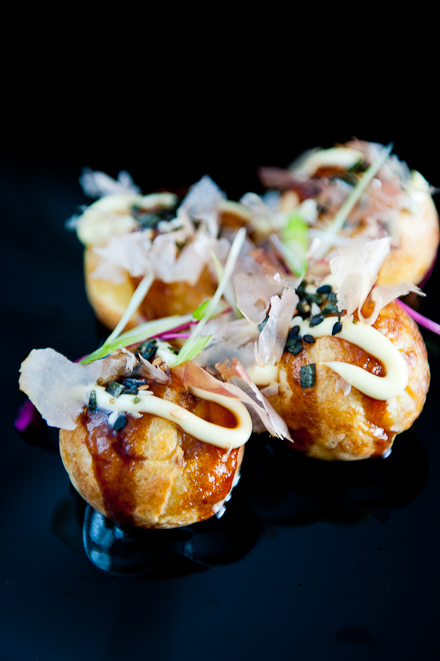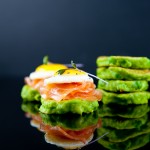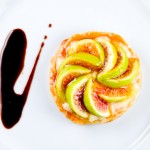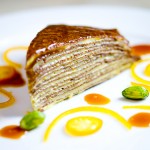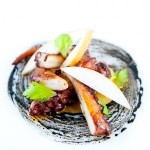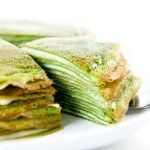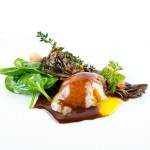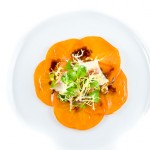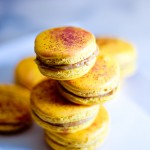Takoyaki
Takoyaki is a ball-shaped Japanese dumpling that’s so good even a planet was named after it. I wanted to recreate this popular street snack ever since I visited Osaka and Kyoto a couple of years ago. It’s been a while but I just can’t forget tasty foods. I can forget my own phone number but not delicious things. It kind of tells you where I set my priorities.
I got around to make some pretty damn good Okonomiyaki last year which is another specialty from this area of Japan but this was next on my to-do list. Takoyaki is usually filled with octopus, pickled ginger and green onion and served with kewpie mayonnaise and a sweeter and thicker version of Worcestershire sauce. It’s finished with a very generous sprinkling of ao-nori and dried bonito flakes. Delicious! It’s also open to many variations so feel free to experiment a little with the technique.
Now, of course, the reason it took me so long to make this recipe is because I had to source a Takoyaki pan, but with the magic of the internet it was easily done. There’s also an electric Takoyaki pan
if you want to make your life easier. The rest of the ingredients can be found in Japanese supermarkets or ordered online.
Oh, and yes, there’s the octopus. I’ve made some sous-vide octopus recently that was very good but if you want to save some time and have access to a Japanese market you could buy it already cooked. Or substitute it for let’s say… shrimp. Less traditional but I’m sure it would be equally delicious.
There’s also the “getting the hang of it” factor of making Takoyaki. You see, you’re trying to form a ball with a batter that has the consistency of a crêpe batter so timing is important, and so is regulating the source of heat (I did put my Takoyaki pan on top of a heat diffuser to get more even results) but overall it was easy and fun to make.
What you do is filling those holes to the top with batter and letting them cook until the batter is set at the bottom but still wet in the middle. Then, using a pick you turn the dumplings to a 90 degree angle so gravity does its part of pulling the liquid center to the bottom. After rotating a few time and filling the little gaps with more batter you’ll obtain perfect spheres with a creamy center and octopus, ginger and green onions trapped inside. Now you can’t say that doesn’t sound good. Enjoy!
-
Takoyaki
-
- Serves 6
-
-
Takoyaki batter:
- 1 cup cake flour
- 1 large egg
- 2 cups dashi, cold
- 1 teaspoon soy sauce
- 1 teaspoon Mirin
-
Fillings:
- 1 cup diced cooked octopus (or shrimp..)
- Tempura scraps (optional)
- 4 green onions, sliced
- 1/4 cup red pickled ginger (Beni shōga)
-
Finish:
- Kewpie mayonnaise
- Takoyaki sauce
- Ao-nori
- Bonito flakes
- Red pickled ginger
-
-
Takoyaki batter:
- Follow this link to make dashi. You’ll need kombu and bonito flakes.
- Start with ice cold dashi. It helps keeping the batter light.
- Combine the egg, the dashi, the soy sauce and mirin in a measuring cup.
- Place the flour in a bowl and pour in the dashi mixture and mix lightly until incorporated. Do not over mix!
-
Cook the Takoyaki:
- Place the takoyaki pan over a heat diffuser if possible, and set over medium heat.
- Brush each hole with a neutral oil (I use grapeseed) to keep the takoyaki from sticking to the pan.
- Pour the batter to the top of each hole. It’s okay to overfill them a little.
- Immediately place a few pieces of octopus, tempura scraps (if using), sliced green onions and red pickled ginger in the batter, and keep cooking over medium heat.
- Check that the batter is set at the bottom with a pick. When they come off easily but the center is still wet turn them to a 90′ angle so the liquid part slides to the bottom. Add a little more batter to fill any holes. And keep turning the takoyaki every few minutes, until you obtain perfect spheres.
- Takoyaki are ready when the outside is golden brown and the inside still creamy.
-
Finishing:
- Place the takoyaki on a serving platter while still hot and top with takoyaki sauce, kewpie mayonnaise, ao-nori, red pickled ginger and bonito flakes. Serve immediately.



